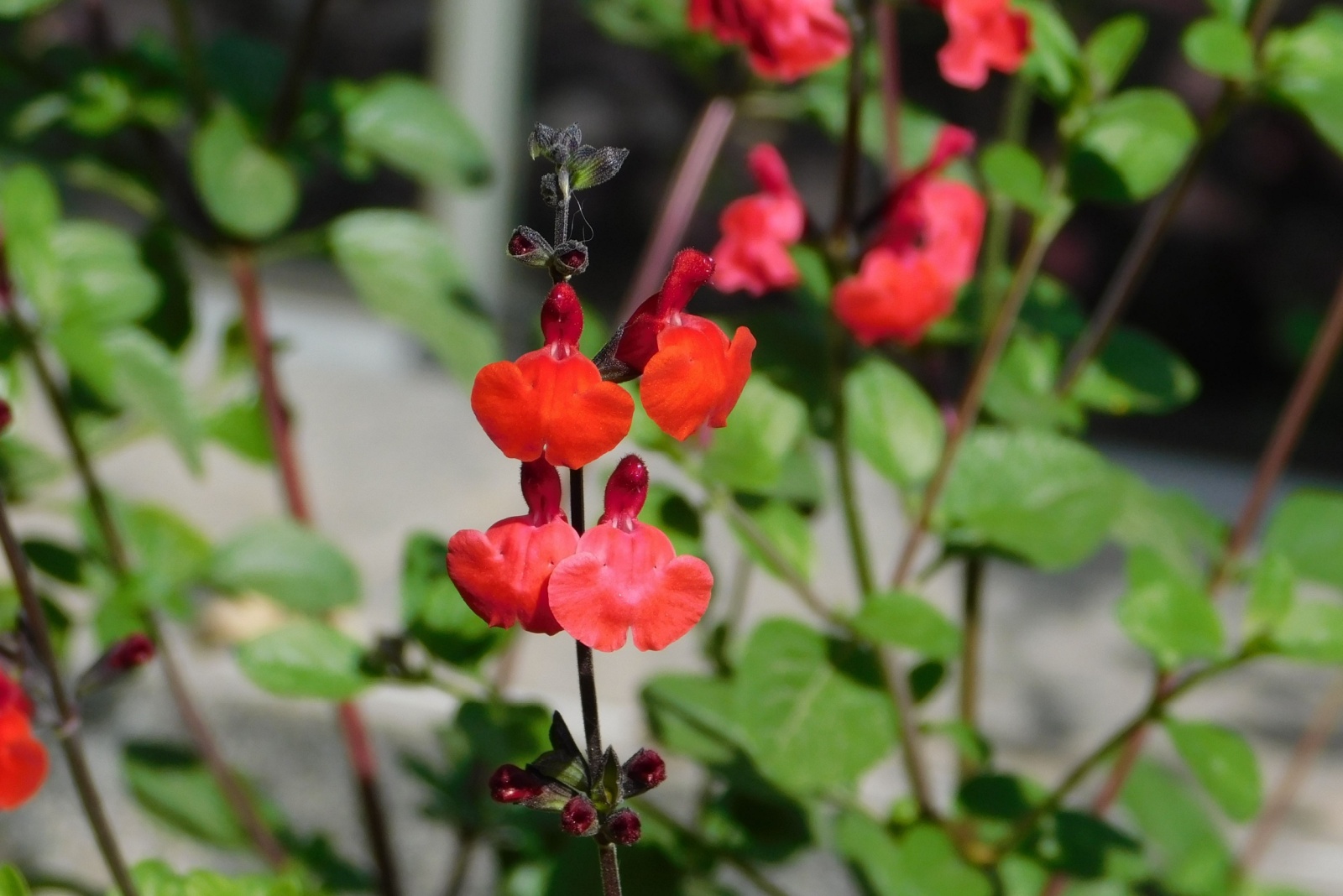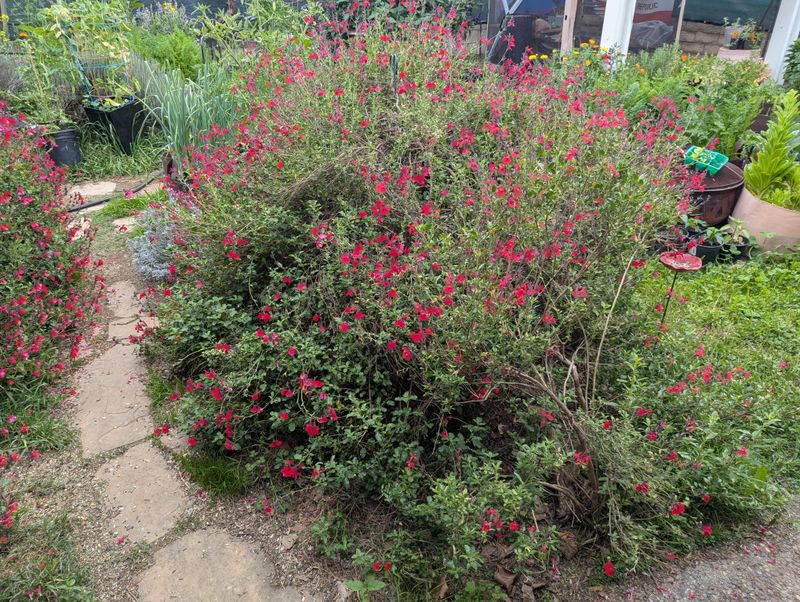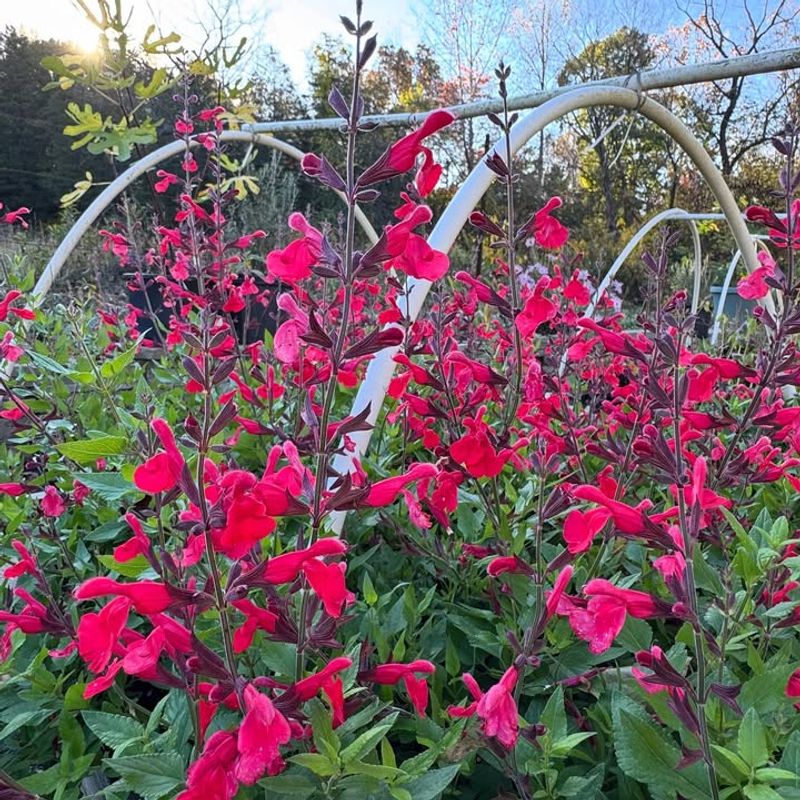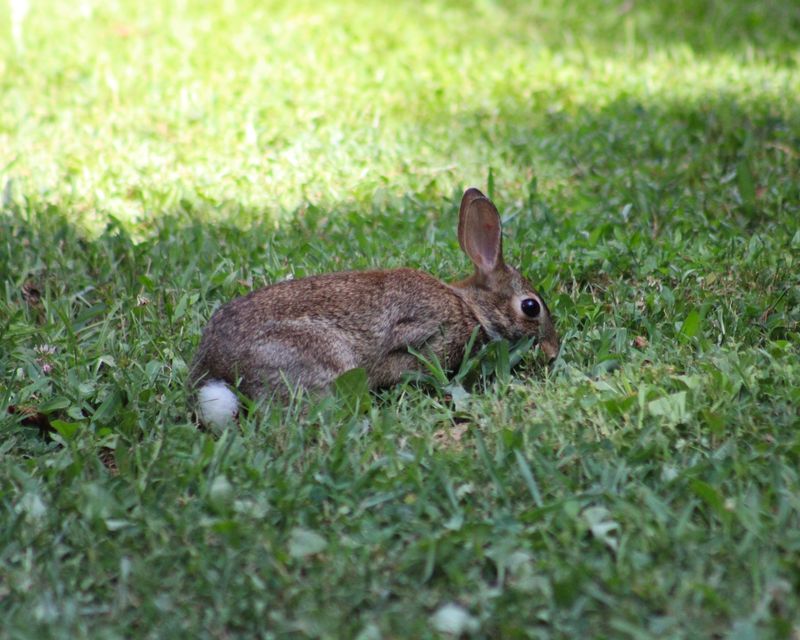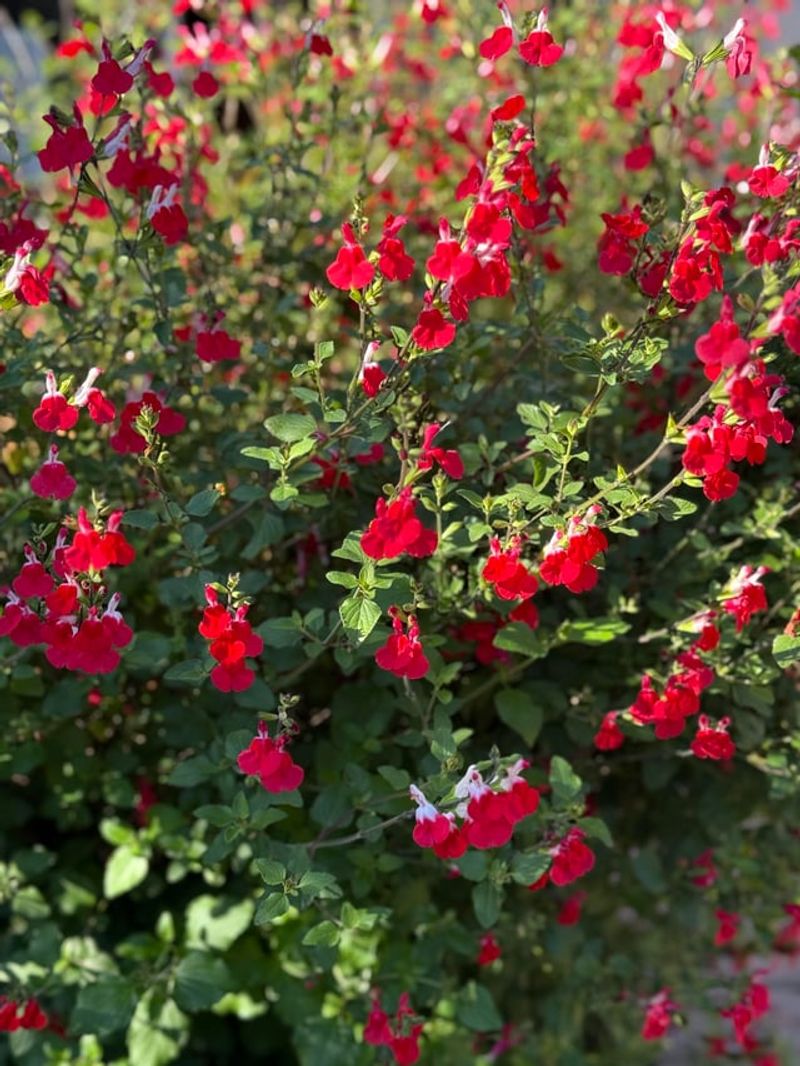This stunning shrub pulls out all the stops in Arizona, flashing red blooms that turn dull corners into head-turning showcases.
Autumn sage stands tough in blistering heat, yet still fires off color that hits the bull’s-eye for gardeners who crave bold impact.
Its bursts of scarlet catch the sun, draw in hummingbirds, and push the landscape into high gear. Autumn sage proves that a compact plant can steal the spotlight and hold it without breaking a sweat. This desert favorite raises the bar for effortless drama.
1. A Desert Native Built For Arizona Heat
Native to Texas and Mexico, Salvia greggii has adapted perfectly to Arizona’s challenging climate. Scorching summers and occasional freezes do not bother this resilient shrub one bit.
Its deep root system helps it survive drought conditions that would damage less hardy plants. Once established, Autumn Sage barely needs watering, making it ideal for water-conscious gardeners.
You will find this plant thriving in full sun, soaking up rays that would wilt most flowers. Arizona gardeners treasure it as a low-maintenance champion.
2. Hummingbirds Cannot Resist Those Tubular Red Flowers
Watch your garden come alive when hummingbirds discover your Autumn Sage! The tubular shape of each red bloom is perfectly designed for their long beaks and tongues.
These tiny birds visit repeatedly throughout the day, creating a delightful wildlife show right outside your window. Butterflies and bees also stop by, though hummingbirds remain the main attraction.
Planting several Autumn Sage shrubs together creates a hummingbird highway that will keep you entertained for hours.
3. Blooms Keep Coming From Spring Until Frost
Unlike plants that bloom briefly and disappear, Autumn Sage puts on a nonstop flower show for months. Starting in spring, fresh red blossoms appear in waves that continue through fall.
Even during Arizona’s brutal summer heat, this shrub keeps producing colorful flowers when other plants look exhausted. Deadheading spent blooms encourages even more flowers to form.
Your garden will maintain vibrant color from March through November, giving you one of the longest blooming periods of any shrub.
4. Grows To A Perfect Compact Size For Any Garden
Measuring about two to three feet tall and wide, Autumn Sage fits beautifully into small spaces without overwhelming them. Its naturally rounded shape requires minimal pruning to look tidy.
Border gardens, container plantings, and foundation beds all benefit from this perfectly proportioned shrub. You won’t spend weekends battling overgrowth or trying to control sprawling branches.
Light trimming in early spring keeps the plant bushy and full, but even without pruning, it maintains an attractive, compact form naturally.
5. Deer And Rabbits Leave It Alone
Gardeners battling hungry wildlife celebrate when they discover Autumn Sage. Deer typically walk right past it, preferring tastier plants instead.
Rabbits also avoid nibbling on the aromatic foliage, which contains natural oils they find unpleasant. This means your shrub stays beautiful without needing fences or repellent sprays.
The minty, slightly spicy scent that protects it from animals actually smells pleasant to humans. You can enjoy a gorgeous, untouched plant while neighbors complain about wildlife damage.
6. Minimal Water Needs After Establishment
Arizona gardeners appreciate plants that do not demand constant watering, and Autumn Sage delivers perfectly. After the first growing season, its roots dig deep enough to find moisture on their own.
You might water it once every two weeks during extreme heat, but otherwise, natural rainfall often suffices. This drought tolerance saves money on water bills while supporting sustainable landscaping practices.
Overwatering actually harms this shrub more than underwatering, so forgetful gardeners often have the healthiest plants!
7. Easy Propagation Means Free Plants For Friends
Want more Autumn Sage without spending extra money? Taking cuttings from your existing plant is surprisingly simple and almost always successful.
Snip four-inch stems in late spring, remove lower leaves, and stick them in moist potting soil. Within weeks, roots develop, and you have new plants to share or expand your garden.
Friends and family will appreciate receiving these colorful, easy-care shrubs as gifts. Starting new plants from cuttings feels rewarding and connects you deeper to your garden.

